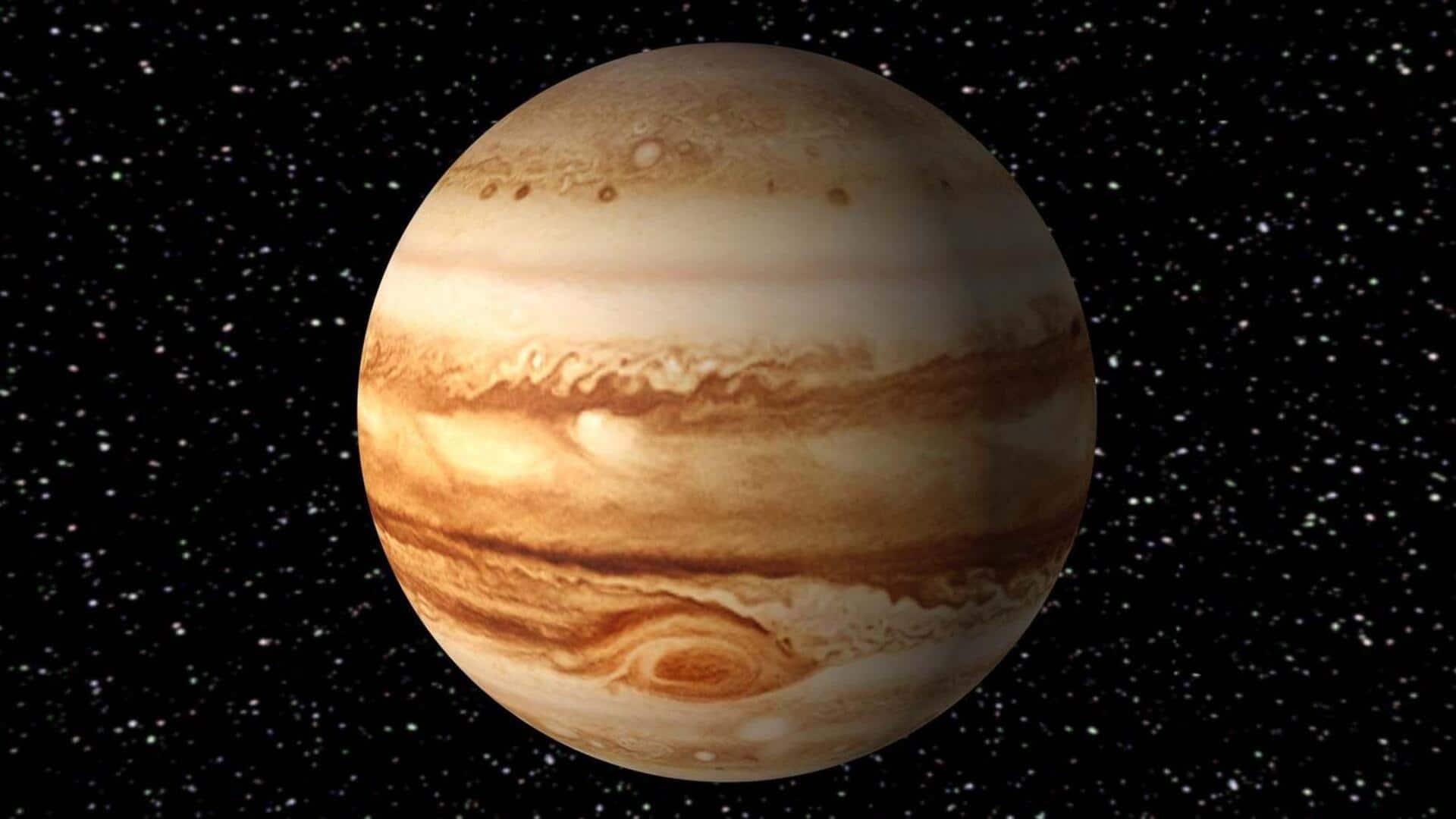
We now have an idea of how Jupiter was born
What's the story
A recent study by researchers from Nagoya University, Japan, and the Italian National Institute for Astrophysics (INAF) has shed light on the formation of chondrules. They are tiny molten rock droplets found in meteorites. The research reveals that these droplets were created during Jupiter's rapid growth phase, about 4.5 billion years ago. The findings were published in Scientific Reports.
Formation insights
What are chondrules and how do they form?
Chondrules, small round droplets of molten rock, are found in meteorites today. They were formed when Jupiter's gravity disrupted the orbits of small rocky and icy bodies called planetesimals. These high-speed collisions melted the rocks and dust in these bodies, creating floating molten rock droplets that we now call chondrules. The study shows that the size and cooling rate of chondrules depend on the water content of impacting planetesimals.
Shape enigma
Why are chondrules round?
Chondrules, tiny spheres of about 0.1-2mm in diameter, were incorporated into asteroids as the solar system formed. Over billions of years, chunks of these asteroids fell to Earth as meteorites. The round shape of chondrules has puzzled scientists for decades. Professor Sin-iti Sirono from Nagoya University explained that when planetesimals collided, water instantly vaporized into expanding steam which broke apart the molten silicate rock into tiny droplets we see in meteorites today.
Simulation findings
Computer simulations of planetesimal collisions
The researchers ran computer simulations of Jupiter's growth and its gravity-induced high-speed collisions between rocky and water-rich planetesimals. They found that the model produced realistic chondrules, matching meteorite data. This process also coincided with Jupiter's intense accumulation of nebular gas to reach its massive size. The peak chondrule formation took place 1.8 million years after the solar system began, which is also when Jupiter was born, Dr. Diego Turrini from INAF said.
Planetary history
Implications for understanding solar system
The study offers a clearer picture of solar system formation and suggests that other giant planets like Saturn may have also triggered chondrule formation when they were born. By studying chondrules of different ages, scientists can trace the birth order of planets and understand the evolution of our solar system over time. The research also indicates that violent planet formation processes may occur around other stars, offering insights into the development of other planetary systems.